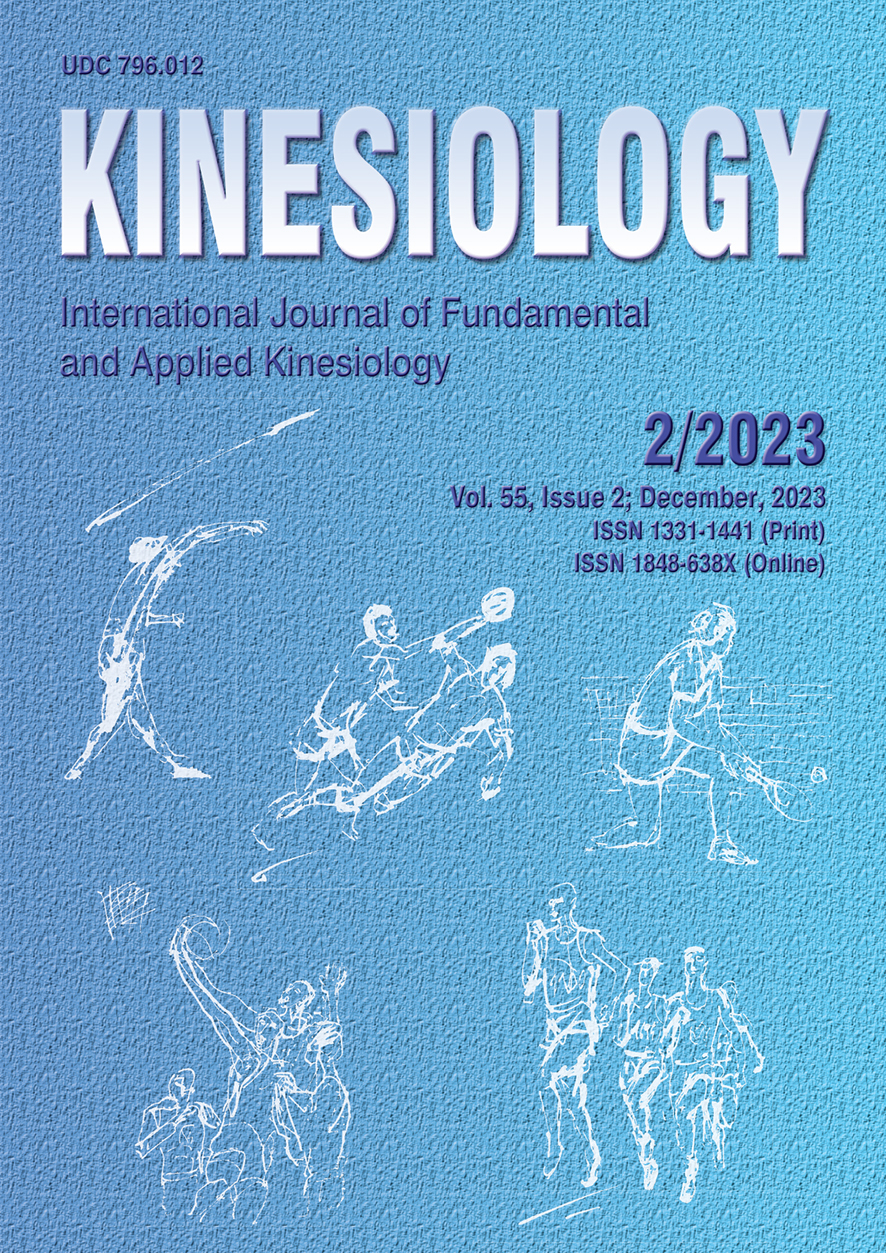DOES THE LOAD-VELOCITY RELATIONSHIP PREDICT MAXIMUM DYNAMIC STRENGTH IN POWER CLEAN FROM THE KNEE?
Abstract
This study investigated the predictive validity and reliability of the load-velocity relationship with the one-repetition maximum test (1RM) in power clean from the knee exercise (PC). Initially, 12 healthy young males, with no PC experience, underwent eight sessions to learn the PC technique. After the learning period, the participants visited the laboratory on four more occasions with intervals between the visits from 72 to 96 h. The first two sessions were dedicated to the actual 1RM tests, while the last two sessions were performed to measure the barbell’s load-velocity relationship at 30%, 45%, 60%, 75%, and 90% of PC 1RM. The highest peak velocity recorded at each load was used to establish the linear regression equation and, consequently, to predict 1RM values. As a result, a low validity was observed between the highest actual 1RM value and the predicted 1RM in sessions 1 and 2 (typical errors = 3.6 to 5.0 kg, coefficients of variation = 6.03 to 8.21%, effect sizes = -1.23 to -1.00, and Bland-Altman bias = 8.5 to 11.7 kg). For reliability, higher measurement errors (intraclass correlation coefficient, typical error, coefficient of variation, and width of limits of agreement at 95%) were observed for the predicted 1RM compared to the actual 1RM test. In conclusion, the load-velocity relationship was not able to predict the 1RM value with high accuracy in the PC from the knee. Moreover, the predicted 1RM presented inferior reliability than the actual 1RM test.
Key words: maximum strength, weightlifting, velocity, velocity-based training, performance
Downloads
Published
How to Cite
Issue
Section
License

This work is licensed under a Creative Commons Attribution-NonCommercial 4.0 International License.
At Faculty of Kinesiology we recognize that access to quality research is vital to the scientific community and beyond. Kinesiology is non-profit journal and all costs of publishing and peer review process are covered by the publisher itself or other funding sources like Ministry of Science and Education of the Republic of Croatia. Full text papers are also available free of charge at http://hrcak.srce.hr/kineziologija. There are no restrictions on self archiving of any form of paper (preprint, postprint and publisher's version).
Articles are distributed under the terms of the CC BY - NC 4.0
Kinesiology does not charge any fees to authors to submit or publish articles in our journal.


